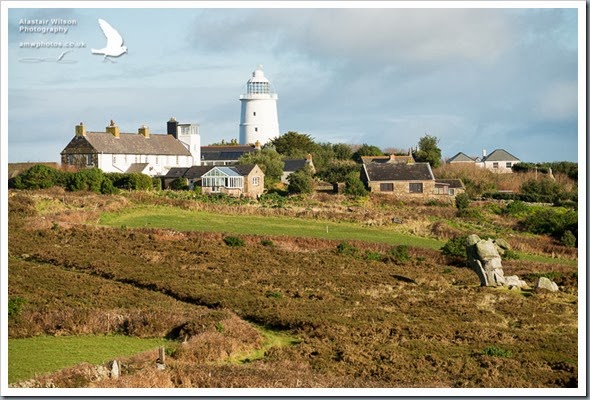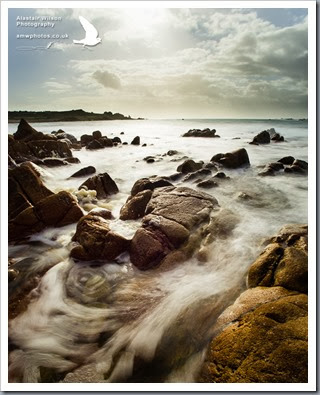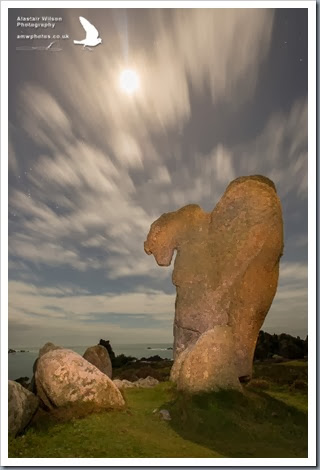Wednesday night is quiz night at the local, but it was a crystal clear night too, and that had to take priority as it hasn’t happened often this winter.
With no moon to interfere with the milky way I headed off down to Wingletang, an open area of heath on the South side of St Agnes. There are some interesting granite rock features on the island which I’ve been planning to light up with a torch ‘painting with light’, one of these rocks is called the Punchbowl and it’s on Wingletang.
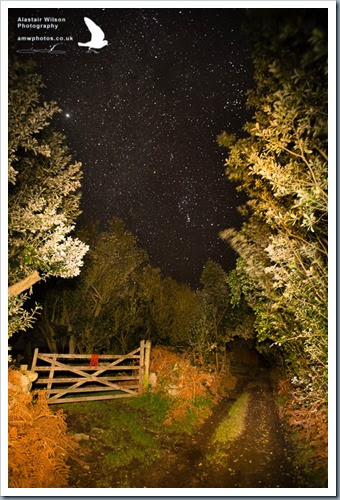
This is Barnaby lane, the main route on to Wingletang.
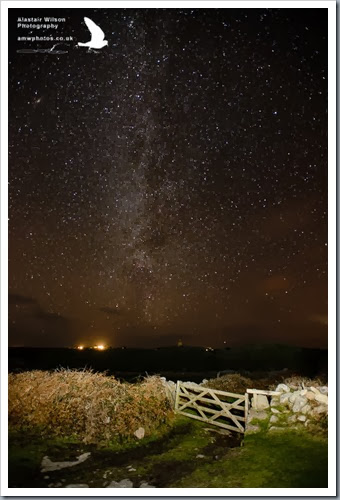 This is the gate down Barnaby lane
This is the gate down Barnaby lane
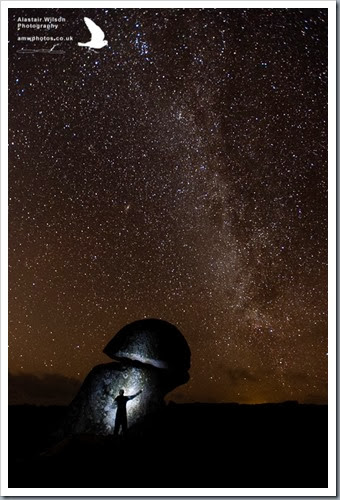 Here I am, silhouetted on the Punchbowl by my headtorch.
Here I am, silhouetted on the Punchbowl by my headtorch.
In the image above I’ve used my LED headtorch which emits a ‘cold’ white light. This is in contrast to the image below where I used an AA maglite, and unscrewed the reflector to expose the bulb. The incandescent bulb gives a much ‘warmer’ light. I personally find my headtorch too cold, and the maglite too warm, so I’ve been using them both combined to light up the hedge, wall, gate, rocks etc. in these images and get a more pleasant hue.
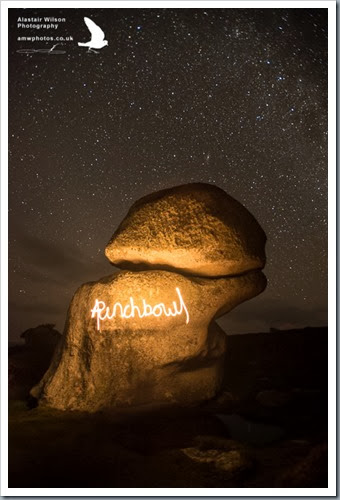 Writing with an exposed torch bulb
Writing with an exposed torch bulb
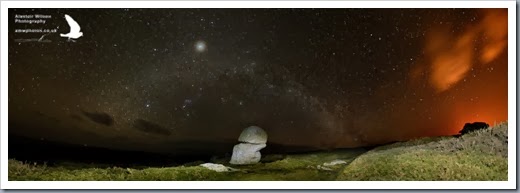 A large panorama of the Punchbowl and milky way. The clouds on the right are lit by light pollution from St Mary’s.
A large panorama of the Punchbowl and milky way. The clouds on the right are lit by light pollution from St Mary’s.
I was quite amazed to see the amount of light pollution coming from St Mary’s. Even in a location as remote as the Isles of Scilly you can’t get away from it! Maybe they might think about night sky friendly lighting if I sent them a copy of this photo.
